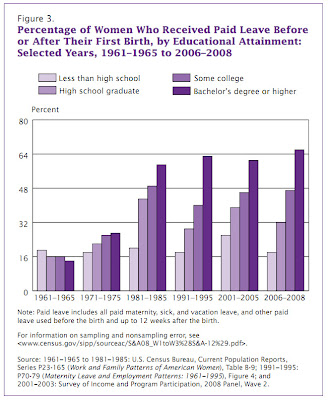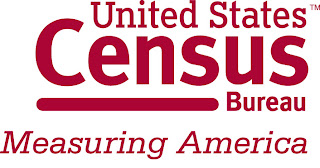This year, my graduate research in the UConn Department of Geography has focused on the vulnerability of Martha’s Vineyard to climate-related hazards like sea level rise and hurricanes. Using ArcGIS’ 3D Analyst, I have created a triangulated irregular network (TIN) to visualize elevation, which you can see above. I generated this model from contour lines (3 meter intervals), which I downloaded from MassGIS. Those of you familiar with the island will notice that this data, from 2005, does not show the breach of Norton Point Beach, which occurred most recently in 2007. For climate related happenings in the Cape Cod and Islands region, check out Climatide- a blog from the Cape and Islands NPR station (WCAI) and authored by Dr. Heather Goldstone.
Monthly Archives: November 2011
Special Tabulation Based on Supplemental Poverty Measure Update
In a follow-up to the release of the supplemental poverty measure report, the New York Times commissioned the Census Bureau to create a special tabulation based on the measure, and as a service to other users we are posting this tabulation online. The statistics focus on the characteristics of the population just above the poverty line (100 to 150 percent of the poverty threshold). The supplemental poverty measure does not replace the official poverty measure but is intended to better reflect contemporary social and economic realities and government policy effects and thus provide a further understanding of economic conditions and trends. Internet address:
http://www.census.gov/hhes/povmeas/methodology/supplemental/research.html.
Special supplemental poverty measure tabulation:
http://www.census.gov/newsroom/releases/pdf/CB11-TPS.51SpecTab.pdf [PDF]
Supplemental poverty measure report:
http://www.census.gov/newsroom/releases/archives/news_conferences/2011-11-04_spm_webinar.html.
Official poverty measure:
http://www.census.gov/newsroom/releases/archives/income_wealth/cb11-157.html.
Tracking Migration Patterns in the U.S.
 |
| Migration patterns of Tolland County, CT from this Forbes interactive map. |
Are you interested in migration patterns in the U.S.? If so, check out this interactive map from Forbes, which is based on IRS data. The map details in and out migration by county. As an example, see the screenshot above of Tolland County, CT. It shows that between 2005-2009, 7,400 people migrated to Tolland County while 3,700 migrated away from Tolland County. The map also allows you to track where the in-migrants are coming from and where the out-migrants are going.
Mercury Hotspots
 |
| In the U.S., Mercury, which is toxic to brain development, is commonly emitted into the atmosphere. |
Do you live near a Mercury Hotspot? I originally saw this map, which is based on a recent report from Environmental America, on Mother Jones. Although Mercury is toxic to us (it negatively affects brain development), it is commonly emitted into the air by industry. In the United States, 2/3 of the emissions are from coal fired power plants alone.
For more on locating pollution in the U.S., check out our other posts:
NPR and the Center for Public Integrity Investigate Poisoned Places of the U.S.
Are Toxic Chemicals Being Released Near You?
Join us at Connecticut GIS Day – November 17 @ 9:45am

There’s still time to join us at Connecticut’s GIS Day events being held today (November 17, 2011) at the Legislative Office Building in Hartford (300 Capitol Ave, Hartford, CT). Included below are details on this free event.
Connecticut GIS Day Schedule of Events – November 17, 2011
http://explorer.arcgis.com/?open=b4908f2573ab4e4ea5f188b7a25e8a8f
Link to the program flyer: http://www.ct.gov/gis/lib/gis/GIS_Day_Flyer_LOB_2011.jpg
Tweeting Around the World
 |
| A screenshot of languages used on Twitter in the Americas. |
Since its inception, social media has spread rapidly. One of the most globalized products is Twitter, which allows users to send out short messages to followers. It is estimated that users send out approximately 200 million of these messages a day. Being such a globalized product, the languages spoken by users includes much more than just English, as you can see in the map screenshots below (the full map is available on Flickr).
 |
| A screenshot languages used on Twitter in Europe and Asia. |
 |
| The Legend for the map. |
First Time Mothers: Maternity Leave & Employment Patterns
 |
| A pattern of the past few decades: women are more likely to work before and after the birth of their first child than they were in the past. |
| A new U.S. Census Bureau report shows that women with higher educational attainment are more likely to work preceding the birth of their first child. |
 |
| The U.S. Census Bureau’s report also indicates women with higher educational attainment are more likely to receive paid leave before or after their first birth. |
Connecticut GIS Day Schedule of Events – November 17, 2011
Census Bureau Webinar to Highlight Migration Data – November 15, 2011
The news conference will consist of a simultaneous audio conference and online presentation. Information on accessing the online presentation is provided below. Reporters will be able to ask questions once the presentation is complete. We suggest reporters log in and call in early.
William H. Frey, senior fellow, Metropolitan Policy Program, Brookings Institution
Toll free number: 888-989-7686
Passcode: CENSUS
Note: Stay on the line until operator asks for the passcode. Do not key in passcode.
Online presentation ― access information
Please login early, as some setup is required.
URL: https://www.mymeetings.com/nc/join/
Conference/meeting number: PW8836688
Conference/meeting passcode: CENSUS
If closed captioning required: http://livewrite.nccsite.com/view/cb1115
Facts for Features – Veterans Day 2011: Nov. 11
Veterans Day 2011: Nov. 11
Veterans
21.8 million
Source: 2010 American Community Survey
1.6 million
Source: 2010 American Community Survey
2.4 million
Source: 2010 American Community Survey
9 million
Source: 2010 American Community Survey
When They Served
7.6 million
Source: 2010 American Community Survey
49,500
- 54,000 served during World War II, the Korean War and the Vietnam era.
Living veterans in 2010 who served during two wars and no other period:
- 837,000 served during both Gulf War eras.
- 211,000 served during both the Korean War and the Vietnam era.
- 147,000 served during both World War II and the Korean War.
Source: 2010 American Community Survey
Where They Live
3
Source: 2010 American Community Survey
14.1
Source: 2010 American Community Survey
Education
26%
Source: 2010 American Community Survey
92%
Source: 2010 American Community Survey
Income
$35,367
Source: 2010 American Community Survey
On the Job
9.6 million
Source: 2010 American Community Survey
Disabilities
26%
Source: 2010 American Community Survey
3.4 million
Source: 2010 American Community Survey
Voting
15.8 million
Source: Voting and Registration in the Election of November 2008
<http://www.census.gov/hhes/www/socdemo/voting/index.html>
12.4 million
Source: Voting and Registration in the Election of November 2010
<http://www.census.gov/hhes/www/socdemo/voting/index.html>
Business Owners
9%
Source: Survey of Business Owners: 2007 <http://www.census.gov/econ/sbo>
75%
Source: Survey of Business Owners: 2007 <http://www.census.gov/econ/sbo>
8%
Source: Survey of Business Owners: 2007 <http://www.census.gov/econ/sbo>




